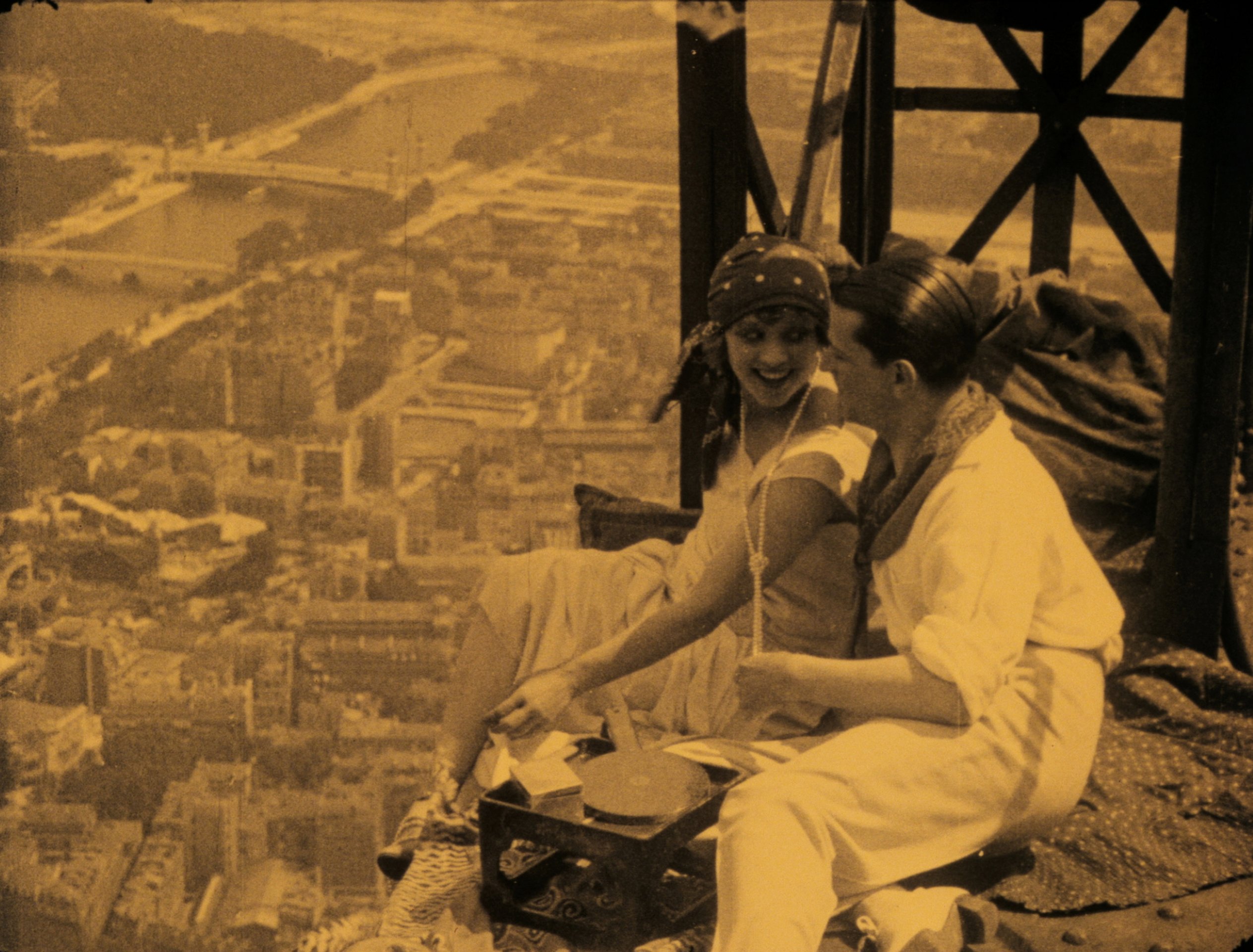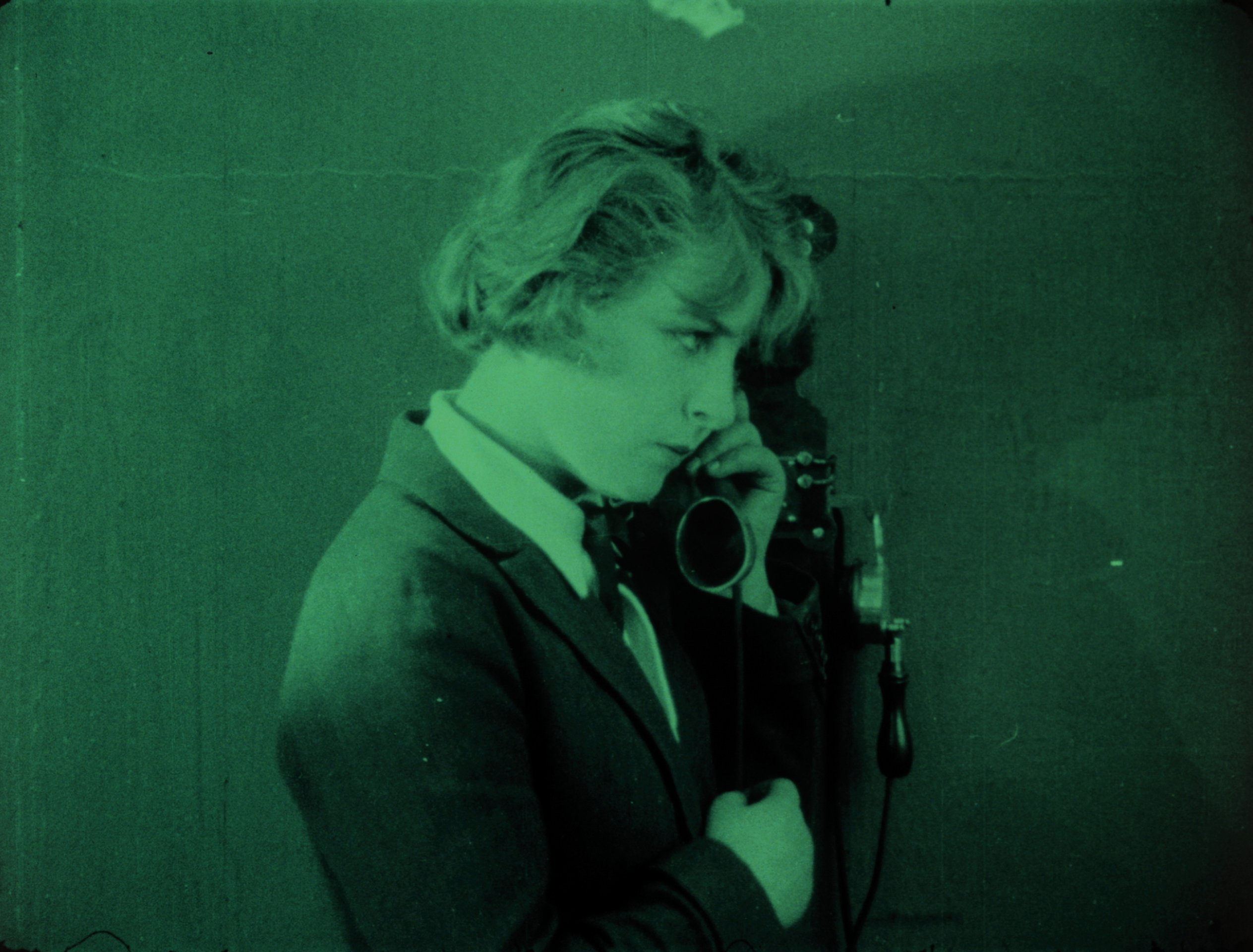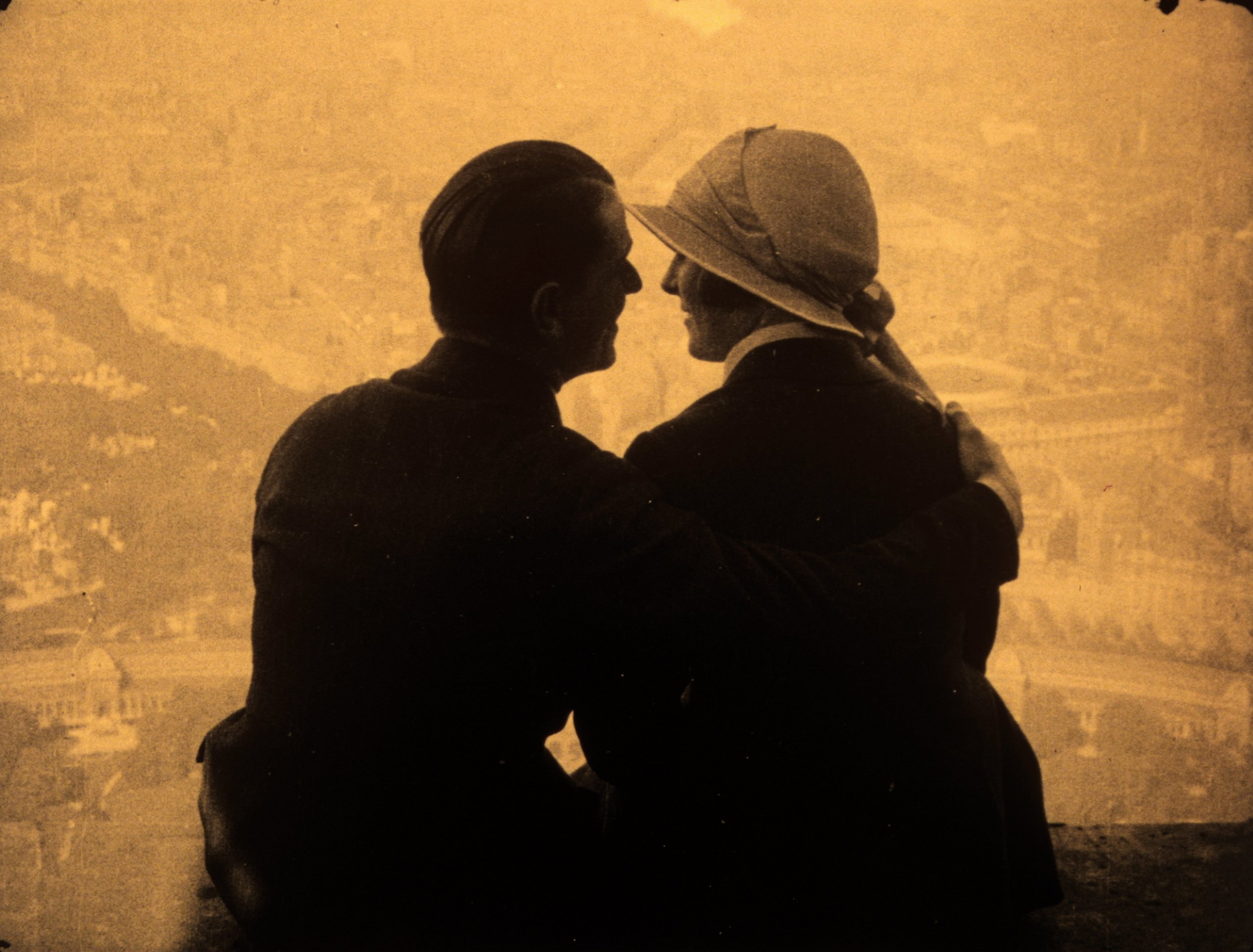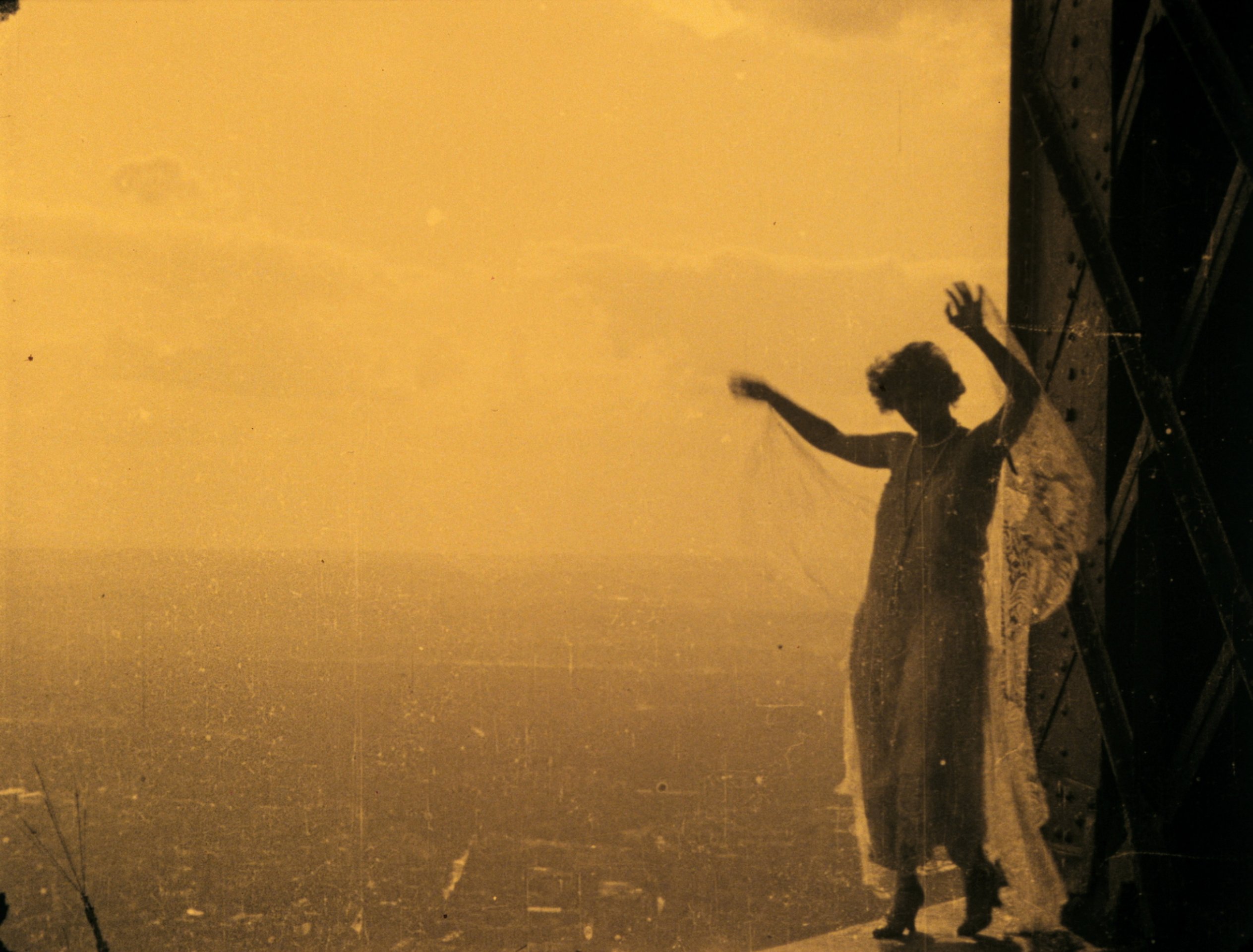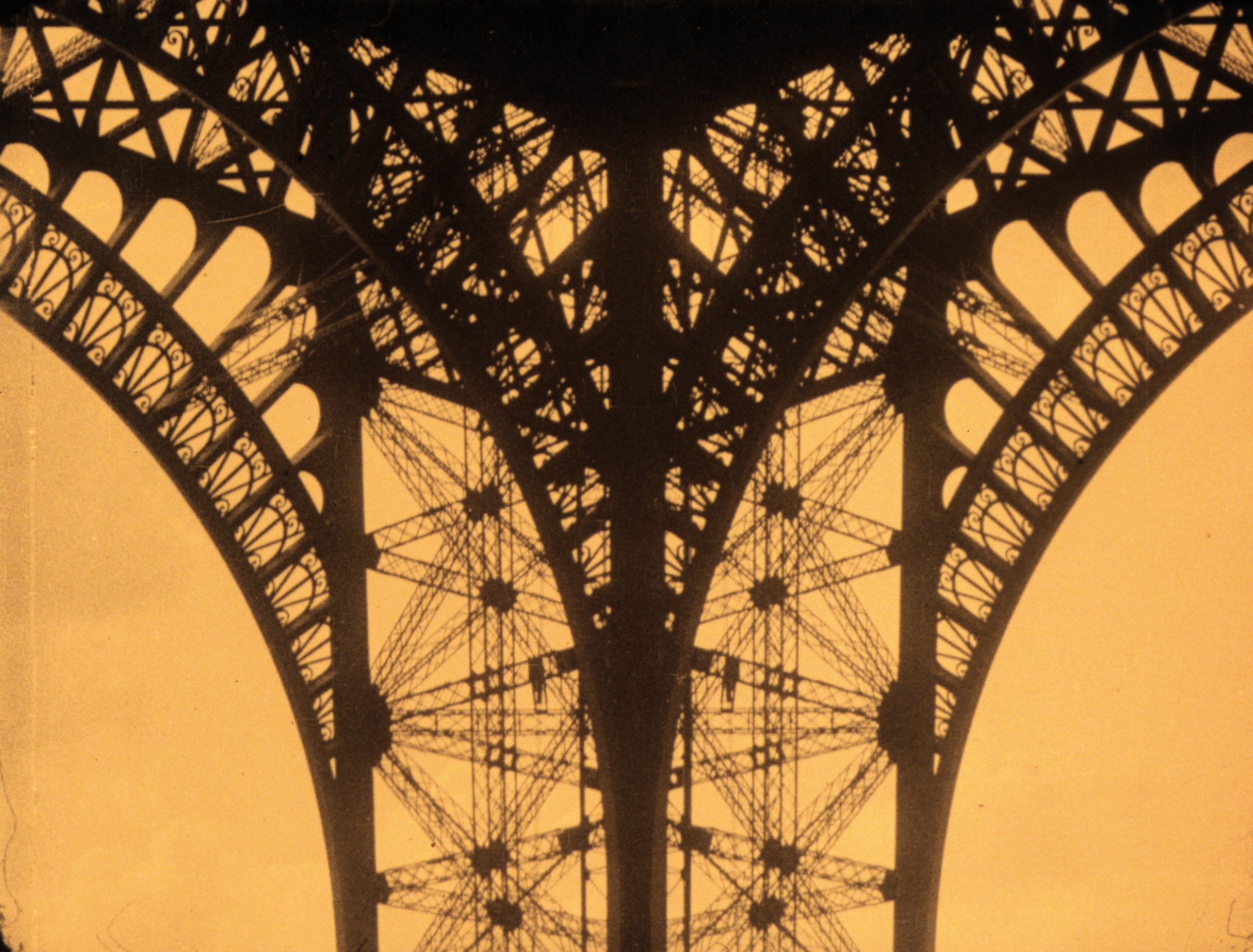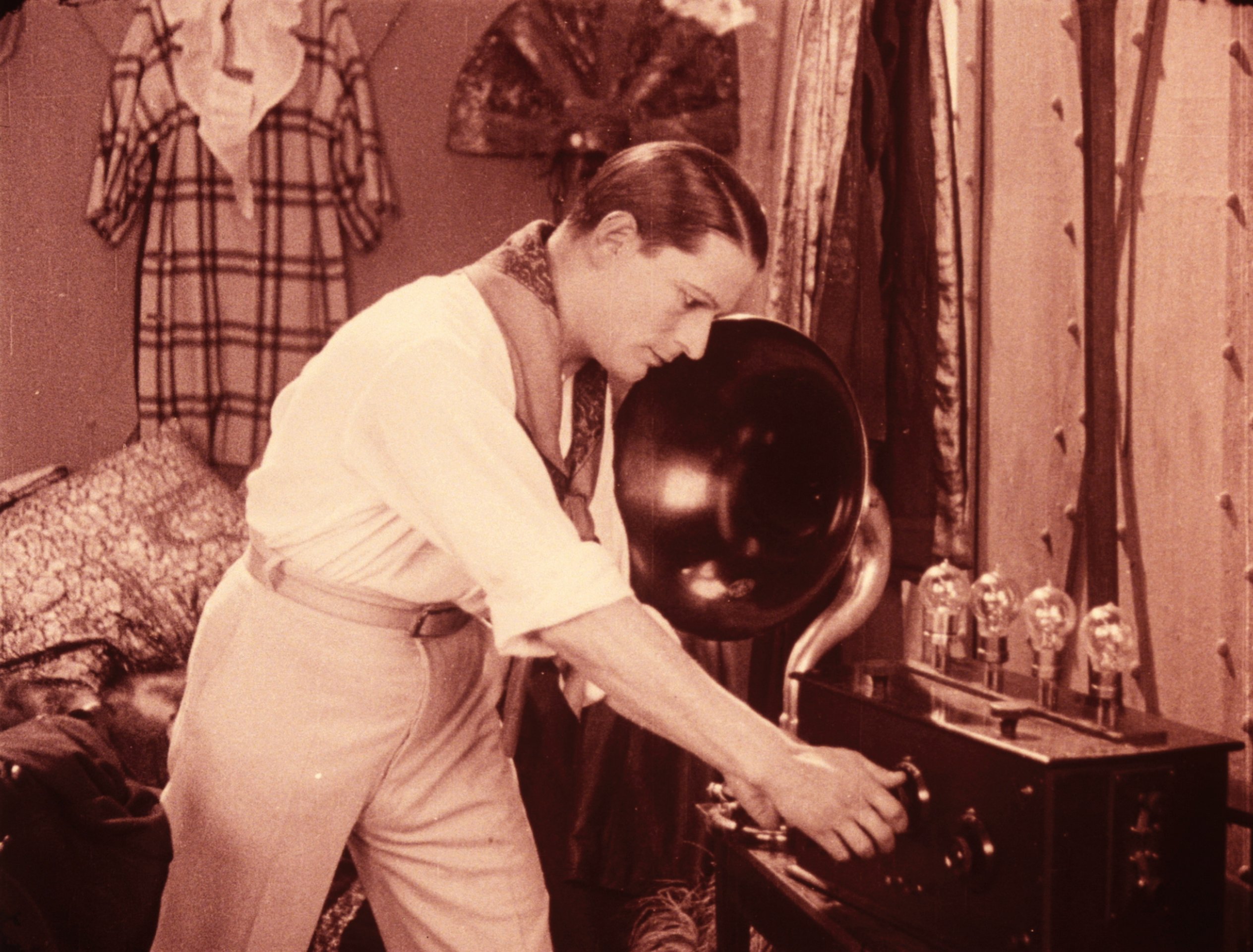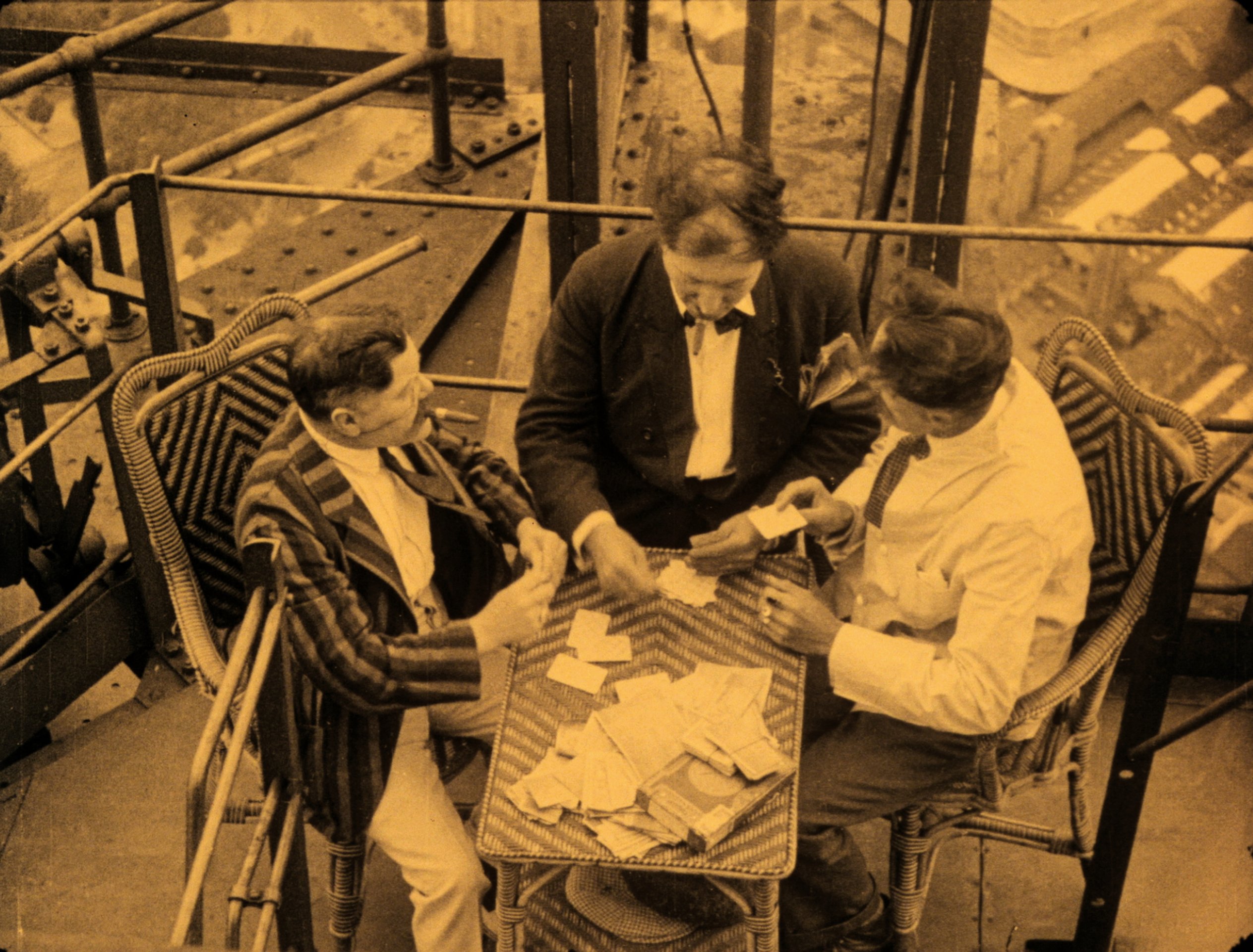
THE CRAZY RAY
The Crazy Ray
(Paris qui dort) (Les Films Diamant, France, 1925)
dir.: René Clair; script: René Clair; photog.: Maurice Desfassiaux, Paul Guichard
cast: Henri Rollan (Albert), Albert Préjean (Pilot), Madeleine Rodrigue (Hesta, airplane passenger), Louis Pré fils (Detective), Antoine Stacquet (Rich man), Marcel Vallée (Thief), Charles Martinelli (Scientist), Myla Seller (Girl)
DCP, 60’; tinted; intertitles: EN, subtitles: PL, FR; restored 2018; source: Fondation Jérôme Seydoux-Pathé
One morning, the Eiffel Tower janitor wakes up to find that his watch has stopped working. As he walks around the deserted streets of the capital, he is surprised to discover that Paris has come to a standstill: cars lie abandoned on the streets, and people all around appear to be fast asleep. He comes across some newly-arrived tourists on his way and they all set off together to conquer the city and find out the reason why it’s in this state of slumber.
René Clair’s debut combines elements of fantasy comedy and the ridiculous. With no shortage of accurate observations of a moral and even philosophical nature, its insightful, poetic and nostalgic portrayal of the city is fascinating. The capital of France becomes an equally important character in the film, a mirror reflecting the nature of both its inhabitants and also the tourists. The shots filmed on the steel structure of the Eiffel Tower are among the film’s most eye-catching elements, and Clair’s picture as a whole had a major impact on the way the metropolis was shown on screen.
With this film, the director wanted to bring freedom back to cinema. ‘Cinema should return to its roots and get rid of this choking artistic fraud,’ he used to say. Although Clair shared an admiration for the avant-garde, he only used its tools to create satire and entertainment, creating a mix of the real and unreal world, far from the vision of Marcel L’Herbier, Jean Epstein or Germaine Dulac. The film has many threads which would remain present in Clair’s work throughout his entire life – such as satire combined with accurate journalistic observation (Clair worked as a journalist after World War I). However, it was the sound films he made between 1930–1932 that would place him among the masters of cinema.
The press screening of the first version of the film took place in 1924, but due to Clair’s involvement in the making of Entr’acte, distribution of the final version was postponed to 1925. (KB)
Restored in 4K in 2018 by the Jérôme Seydoux-Pathé Foundation at the L’Immagine Ritrovata laboratory from a tinted nitrate print held at the BFI National Archive.
introduction to the movie: Svetlana Furman
section: DIRECTION: FRANCE
music by: Księżyc
FRIDAY | OCTOBER 22
18:30 | screening room: STOLICA
Festival opening
presented with: A Few Eiffel Towers and Bicycles from the First Decade of the Last Century

